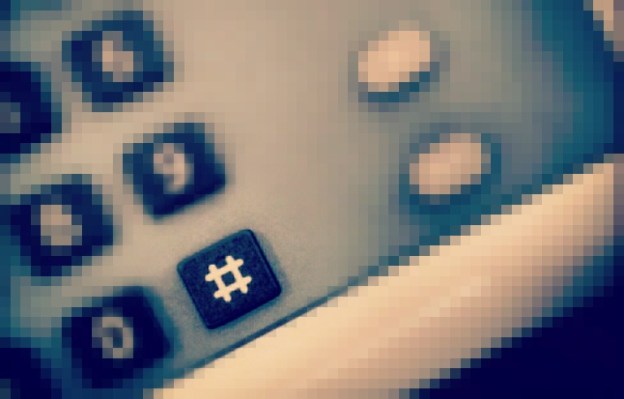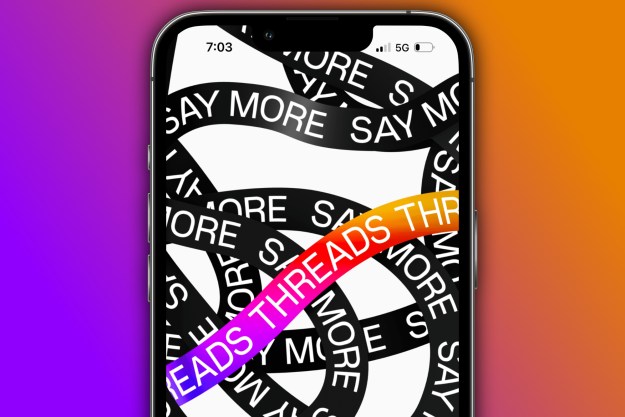
Hashtags are more mainstream than ever, but they’re morphing into something way weirder than the search and discovery tools they were meant to be. They can be super annoying when people clutter their posts with 15 different tags in a bid to gain followers (cough #followback cough cough #stopdoingthat cough) but they’re being used in interesting and unexpected ways, too. Depending on where and when you’re throwing down the shift-3, they can enhance or spoil your social media experience.
The good, the bad, and the ugly of the Twitter hashtag
Twitter users popularized the hashtag, but hashtags don’t operate on Twitter the way you may assume. People who load their tweets with hashtags aren’t usually upping their chances of gaining influence in any substantial way.
That doesn’t mean hashtags don’t work. They do work – in a big way. Companies have found all sorts of ingenious ways to use hashtags as branding tools – as evidenced during the SuperBowl, when campaigns from Budweiser, Audi, Volkswagon, Best Buy and Speed Stick all came with catchy hashtags.
And according to a survey taken by RadiumOne, an advertising company, people are interested in hashtag campaigns that involve perks (not surprising).
But what works for companies and Twitter users with larger followings doesn’t really apply to people who have smaller groups, since their posts get seen by less people.
When an average Twitter user uses a popular hashtag – for instance, #SXSW during the festival, or #Superbowl on game day – it is true that their posts will appear in searches for the hashtag. But since Twitter defaults to showing you the top users who tweeted with it, unless you’re Rob Delaney or Justin Bieber, you won’t pop up in the first results people see.

There were 4,000 tweets with the hashtag #Superbowl sent a second this year, so the chances of someone new seeing yours probably weren’t as good as you hoped.
If you want to make your Twitter hashtags possibly more useful, you can use Twitter analytics services to see which of your tweets tend to garner more attention – though since Twitter is developing its own analytics service, those third-party apps might not be long for this digital world. Maybe you get hit with crickets when you tried to live-tweet the Oscars, no matter how many #HathaHaters you threw out there. Twitter offers some advice about using hashtags, but even if you follow it, the results just aren’t always there.
Bottom line: if you think you can go from 30 followers to 3,000 just through hashtags, it will likely take longer than you thought.
But that doesn’t mean you should abandon the precious pound sign. You just have to think of it less as a means to get more people to click “follow” and more of a self-expression thing.
The many types of hashtags
Not all Twitter hashtags exist for solely utilitarian purposes, of course. A whole culture of hashtagging has evolved since that first #. You don’t even have to use them earnestly. Sarcastic hashtagging is an art form:
Just saw one of the sign holders on the side of the road, sign stuck in the ground, beer in his hand! #HardAtWork #Merica
— Tate Preston (@Tate8007) April 1, 2013
Or you can do a run-on hashtag, which is the opposite of hashtagging every single word. Instead, just use a long phrase that no one would ever search for. It’s generally a completely inefficient search tool but it can be extremely entertaining, especially if you’re talking about Frasier:
Pro tip: if you’re feeling grumpy, walk around your apartment and pretend you’re Frasier Crane for 5 minutes #tossedsaladandscrambledeggs
— KateKnibbs (@KateKnibbs) January 25, 2013
And sometimes people take hashtags and bring them into the real world, which is awkward for everybody. TV shows try to engage with viewers with hashtags all the time. And British soul singer Robin Thicke took hashtags off the Internet and onto his music video (which you’re watching again on the Internet, so … circle of life):
Even when you’re not on social media or the Internet, you’re not completely safe from hashtags. Like “BRB” and “LOL,” it’s starting to creep into actual conversations. And people might pretend it’s ironic when they say things like “hashtag TGIF” but they kind of mean it.
The strange – yet effective – Instagram hashtag
Even though Twitter is undoubtedly the central hub for hashtags, Instagram has used them to great effect for awhile. And if you’re an average social media user, you will probably have a much easier time gaining followers with hashtags on Instagram for two reasons: One, when you search for a hashtag there, it’s much easier to scroll through photos and click and add users you like than it is to read lots of individual tweets about a topic.
Secondly, though Instagram’s user base is growing rapidly, right now it’s still substantially smaller than Twitter’s, so the amount of people using the same hashtag at once is more manageable. Perhaps if Instagram keeps expanding – which is likely – it will suffer from the same content bottleneck as Twitter, where there are too many users doing the same thing to get noticed. But right now, you’ll probably get more out of Instagram analytics service Nitrogram’s new hashtag feature than you would trying to find the right ones to use on Twitter.
You can now use Instagram on desktop, but if you do, you need to use a service like Statigram to search for hashtags and trending topics.
Instagram is now owned by Facebook and it’s not a little underground networking app anymore, so people use it to push products and brand themselves just like every other social network. But it still looks like the little, intimate photo-sharing app it once was, so it’s kind of startling to see people aggressively label their personal travel photos with 12 hashtags in a bid to get a higher follower count. And it’s a good reminder that people use every form of social media to push the agenda of building their brand. It might be nice if Instagram actually limited the amount of hashtags people can put on a photo to something smaller than 30, which is how many you can add now (30!?). Please, whatever you do, #stop #doing #this #followmebackpleaseseriouslyrightnow #garbage. This is just terrible:

Google+ gets it right, but does anyone care?
Google+ lets its users tag their posts with hashtags, too, and even though people aren’t as active on G+ as they are on Twitter, it’s definitely the easiest hashtag experience because it comes with auto-complete, so you can see some of the hashtags people have used in the past. Since they’re boxed off, they’re less aesthetically jarring than the hashtags on Twitter, so you can get away with adding more at the end without looking spammy and play around with different variations.

And while Google+ separates the posts into “Best of” and “Most recent” (similar to Twitter’s “Top” and “All” categories), the site design looks cleaner and integrates media better, so you can scroll through and pick out what you like from other random users more easily – which means they can do the same to you.
The future of the hashtag
Facebook recently announced it is optimizing for hashtags, which might be useful, but is also deeply unfortunate for those of us who like to make fun of everyone uselessly using it on the social network.
And even though Facebook doesn’t have hashtags yet, they’re still more exciting than Google+.
When Twitter users started adopting hashtags, it didn’t seem like the feature would work on Facebook – while Twitter focused on public updates, Facebook was more involved with communications between semi-closed social circles, so it seemed like hashtags wouldn’t work well there.
But Facebook is changing. Mark Zuckerberg wants it to be more like a personalized newspaper than a private message board, and since many companies, media, and public figures use Facebook as a place to post public messages, hashtags may work – and they may encourage users with strict privacy settings to change some of their posts to “public.” And since Facebook just introduced its Search Graph, it may also debut some interesting methods for pinpointing helpful hashtags in search. It would also mean the photos you push to Instagram with hashtags would become searchable.
Since Facebook’s hashtag implementation is still in development, we don’t know how it work exactly, but what is fairly clear is that they are meant to push us toward making more public updates – because a hashtag is only useful if it’s seen. They might even try something like automatically making a hashtagged post searchable to some extent.
Facebook’s hashtags are still in development, but other social networks are already adopting the feature. Flickr got hashtags last month – perhaps a way for the photo-sharing service to stay competitive with Instagram. And messaging app Path just got the feature as well, though its functionality will be curtailed because Path works kind of how Facebook used to, where people only share with smaller circles, not the general public.
However you feel about the hashtag, it certainly isn’t going anywhere. If you can’t take the over-hashtaggified tweets or the real-life use of the term, just remember that for all of the pound sign-saturation, it’s a very useful discovery tool. And when it comes to the social Web, you get what you give.
Editors' Recommendations
- What does a check mark mean on Facebook Messenger?
- Bluesky barrels toward 1 million new sign-ups in a day
- How to create multiple profiles on a Facebook account
- Why is Twitter called X now? Here’s everything you need to know
- The 10 big ways that Threads is totally different from Twitter




